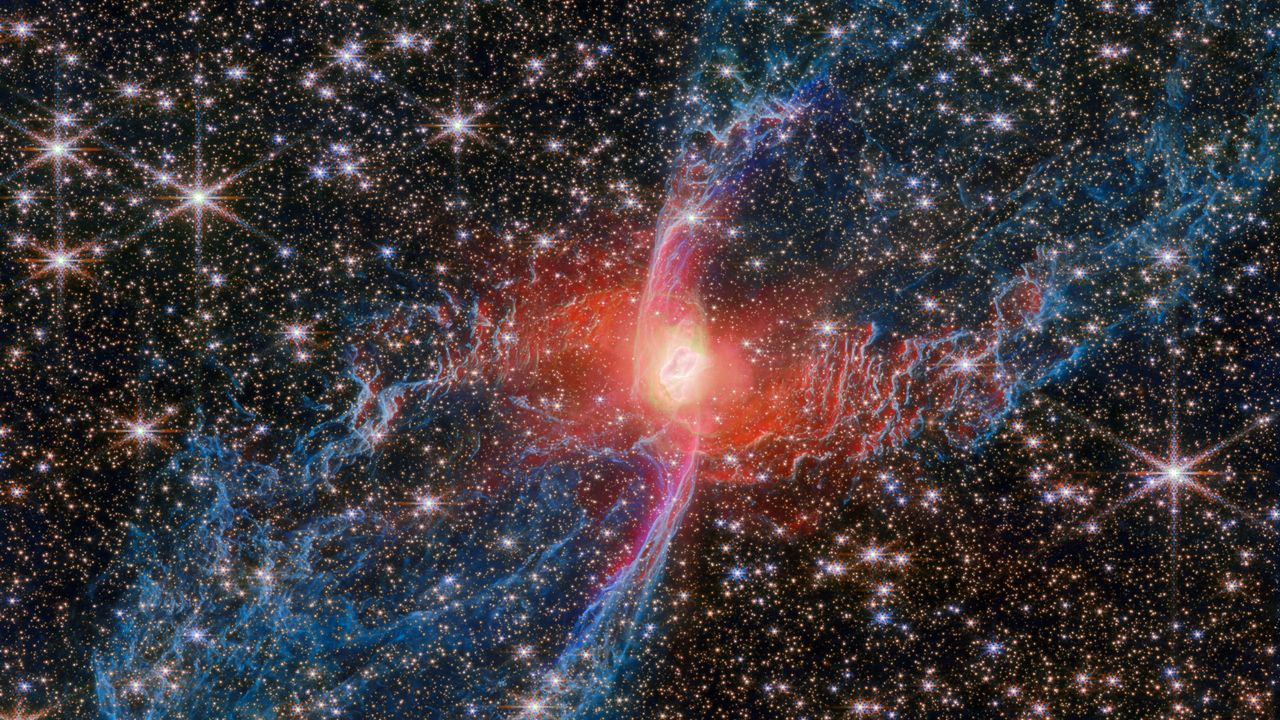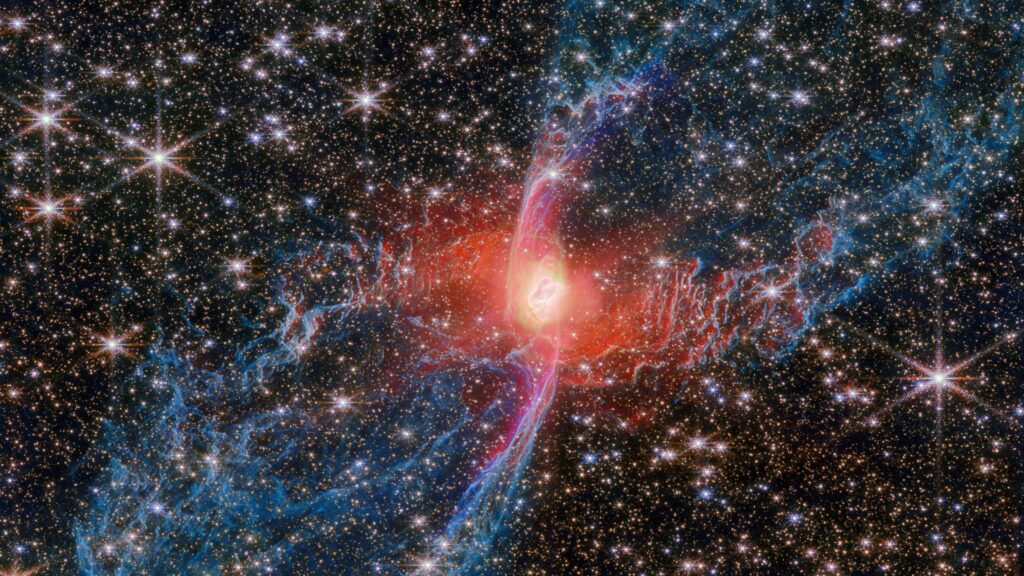
The James Webb Space Telescope (JWST) is celebrating Halloween with a stunning image showing never-before-seen details of the Red Spider Nebula.
The image, snapped by JWST’s Near-Infrared Camera (NIRCam), shows dust and gas being shed by a dying star to form a planetary nebula, its filaments twisting and stretching like the limbs of a cosmic arachnid.
“The legs are hairy and shine with molecular hydrogen emission, which have escaped from the torus,” Mikako Matsuura, an astrophysicist at Cardiff University and a co-investigator on the program that took the image, said in an email statement. “It is still unclear why the outflows appear ‘hairy’. One possibility is that the outflow from the primary star was not continuous, perhaps because mass transfer from the companion star affected the timing of the outflow.”
For most of their lives, stars burn by fusing hydrogen into helium. But once they have exhausted their hydrogen fuel, they begin fusing helium into even heavier elements, leading to a massive increase in energy output that causes them to swell into red giants hundreds or even thousands of times their original size.
The star in the Red Spider Nebula (NGC 6537) has already transformed into a red giant and is currently shedding its outer material to expose its white-hot core. The ultraviolet light from the star’s embering heart is ionizing this gas and dust, causing it to glow.
Stunning images such as this one offer scientists rare insights into the possible future of our own solar system, after our sun transforms into a red giant in 5 billion years’ time. After running out of fuel, our star too will accelerate outward as a red giant, consuming Mercury, Venus and possibly even Earth and Mars in the process.
But if our planet is spared from the sun’s transformation, it could find itself in a scene much like this one, drifting out along the dewy limbs of a perishing cosmic spider.
